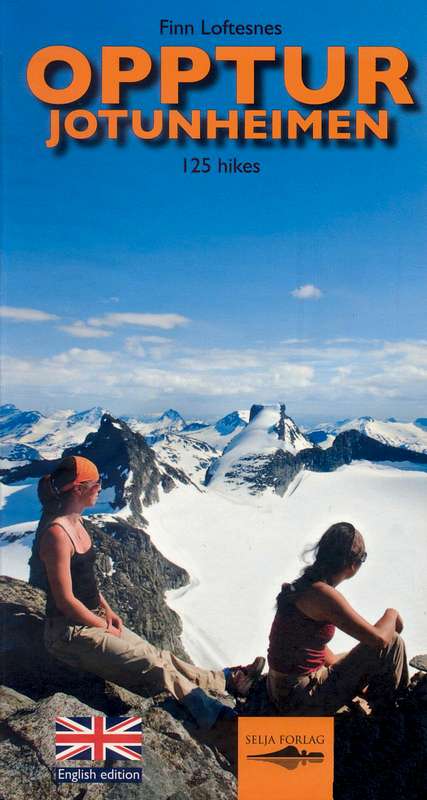-
 8416 Hits
8416 Hits
-
 78.27% Score
78.27% Score
-
 9 Votes
9 Votes
|
|
Mountain/Rock |
|---|---|
|
|
61.52957°N / 8.33656°E |
|
|
Hiking, Mountaineering, Scrambling |
|
|
Summer |
|
|
7329 ft / 2234 m |
|
|
Overview
Geographical classification: The Scandes > Jotunheimen > Visbretind
Visbretind 2234 m
The Jotunheimen range is located inside Jotunheimen National Park, 350 km North to Oslo, in the middle of Southern Norway, between the counties of Innlandet and Vestland. In Norwegian Jotunheimen means "Giants Home" and the reason of this nickname is that the highest mountains in Norway lie in this area. It’s the most well-known and the largest mountain range in the country; valley level is about 1400 m and there are quite a number of glaciers in the area and above numerous snowcapped peaks. Visbretind is a spectacular mountain located in Visdalen near the middle of the Jotunheimen mountain area and it's the highest of its group. It is situated between the famous obelisk of Kyrkja and the jagged peak of Semelholstind at the head of the Visdalen valley. Visbretind is separated from Semelholstind by the Visbreen glacier and it's really a wonderful peak to climb and stay on, admiring a breathtaking view towards four main valley and Jotunheimen peaks towering all around!
As seen from many sides, Visbretind look steep and difficult to climb. Actually the South flank, considered as the standard route to get the top, is a steep bouldery slope and offers an easy route to the summit.

This itinerary is well approached from Leirvassbu refuge via Kyrkjeoksli and it's mostly rock. The beautiful Northern face is enveloped in a glacier filled corrie. The mountain has glaciers on it's East and North-East sides and a sharp North ridge.
Access to the mountain is from either Leirvassbu or Spiterstulen lodges.
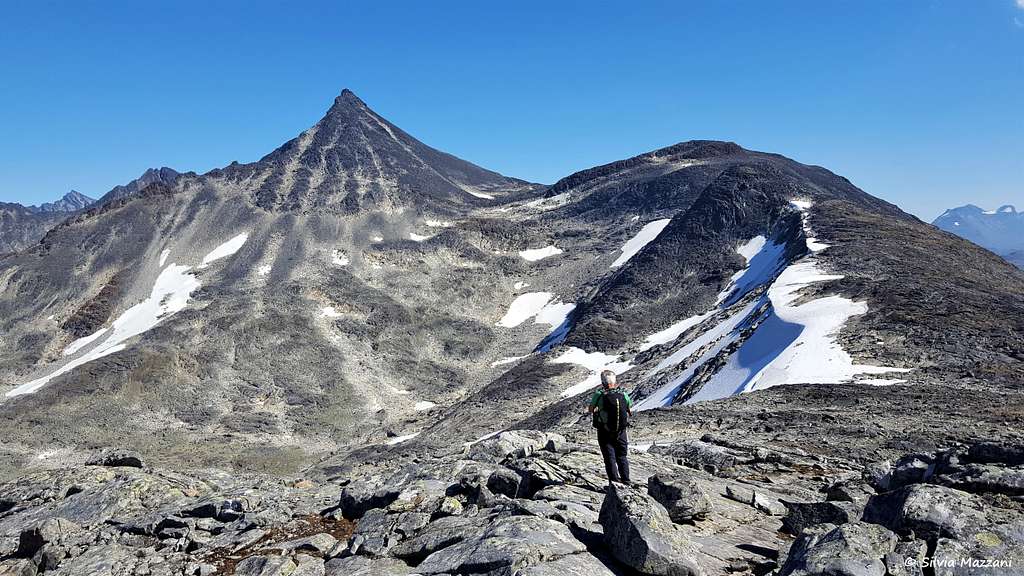
Getting There
The starting point to climb is Leirvassbu Mountain Lodge 1405 m, located in the county of Lom, at the head of Leisdalen, right next to the lake “Leirvatnet”.
Public transportation
There are bus transportation from Oslo and Bergen to Lom and train from Oslo to Otta. There's no bus to Leirvassbu so if you come by public transport you'll have to tackle the longer walk in from Spiterstulen to the NNE.
Spiterstulen can be reached by a bus from Lom (twice a day during the summer). Lom is reached by bus direct from Gardemoen or by train from Gardemoen to Otta and bus from Otta to Lom (cheaper than the direct bus if you pre book the train journey).
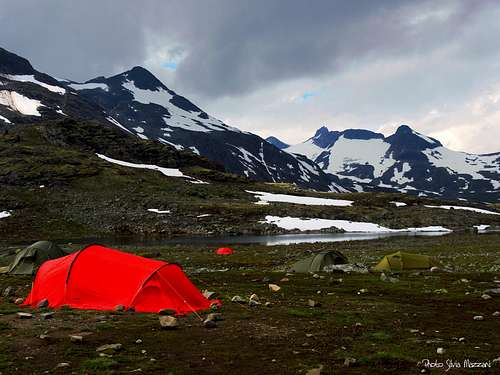
By car
The road to Leirvassbu is reached from Oslo Gardemoen airport by following road E6 to Otta, road 15 to Lom and the Sognefjellsvegen mountain road (road 55) towards Turtagro/Sogndal through Bøverdalen valley for about 30km to the Leirvassbu turnoff. After 20 km you will pass the Elveseter Hotel on the right hand side of the road. Continue for another 6 km, before taking a left turn on the private toll road towards Leirvassbu. The crossroad is marked "Leirvassbu". The road starting from the Sognefjell road and leading to Leirvassbu is a private toll road (only credit card). It is open from the beginning of the summer season until the end of September. 14 km. from the turnoff. If you are travelling from Årdal or Sogndal, you must take a right turn approximately 16 km after passing the highest point of the "Sognefjell" road.
Visbretind South flank standard route
Visbretind Standard Route report
Summit altitude: 2234 m
Difficulty: scramble
Vertical gain: 950 m
Exposure: various
Starting point: Leirvassbu Mountain Lodge
The south flank via Kyrkjeoksle and Langvasshøi with Leirvassbu lodge as the starting point is the easiest route to summit Visbretind. A worthwhile route inside a spectacular setting!
From Leirvassbu Mountain Lodge take a gravel road along the West side of Leirvatnet Lake heading Southward. Just after the gravel road starts turning right (SW) into Gravdalen, leave the main road and turn to left onto a trail getting to Høgvaglen saddle at 1518 m. Follow the trail between boulders and granite slabs, getting the saddle, where it's located a small lake near a trail junction towards Langvatnet, Olavsbu and Gjendebu. At this saddle leave the well marked path to Gjendebu and turn to left onto an unmarked trail (cairns) up on the middle of the ridge towards Kyrkjeoksli, a small hill on the right of the trail. After a steeper rocky ground, cross some snowfield (there may be more different trails, all heading to tha same point). At a certain point, halfway on the ridge between Høgvaglen saddle and Kyrkjeoksle, there is a small easy descent down to a saddle from which Kyrkja is climbed via the South ridge. Ignore the trail towards Kyrkja and reach the point 1843, which is the top of the western hill of the Kyrkjeoksle ridge. From the west end of Kyrkjeoksle follow the ridge in the South-East direction for a further 1½ km, which take you across a long shallow saddle. At the far end of this saddle the ridge gets quite steep as it climbs up to a sharp bulge at 1929 m which is the east end of the Kyrkjeoksle ridge. It's possible not to climb this bulge and reach the other side traversing round the south side, getting a saddle on the East side which is often covered by a snowfield, even in summer.
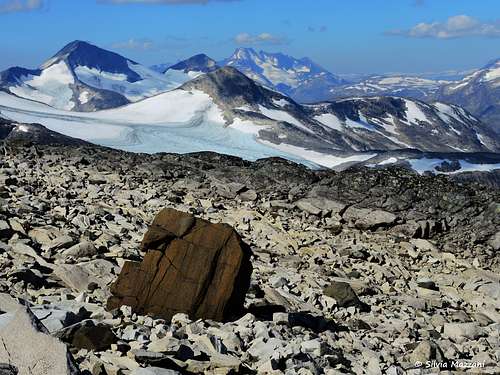
From here the route now must climb a steep 100 meters high slope covered by big unstable boulders. After this tiring stretch there's a flatter area, North of which there are some reddish outcrops located on top of a steep slope. Head towards these red rocks, passing them on the east side, then head north east across some very rough textured bare rock to reach the saddle between Langvasshøi and Visbretind. From this saddle the final 250 metres climb goes up a steep scree slope to the summit. Actually it is much easier than it looks. At the top of this slope is the short summit ridge, then the beautiful summit.
Descent - reversing the same route.
Other routes
- South Flank Route via Langvatnet and Langvasshøi
Same final as the previous route, but the approach from Leirvassbu is different. This itinerary may be approaxhed also from Olavsbu cabin and Gjendebu lodge, but the easiest starting place of any of these 2 routes is Leirvassbu lodge.
- North ridge with Leirvassbu or Spiterstulen lodges as the starting point
A fine itinerary, involving some exciting scrambling.
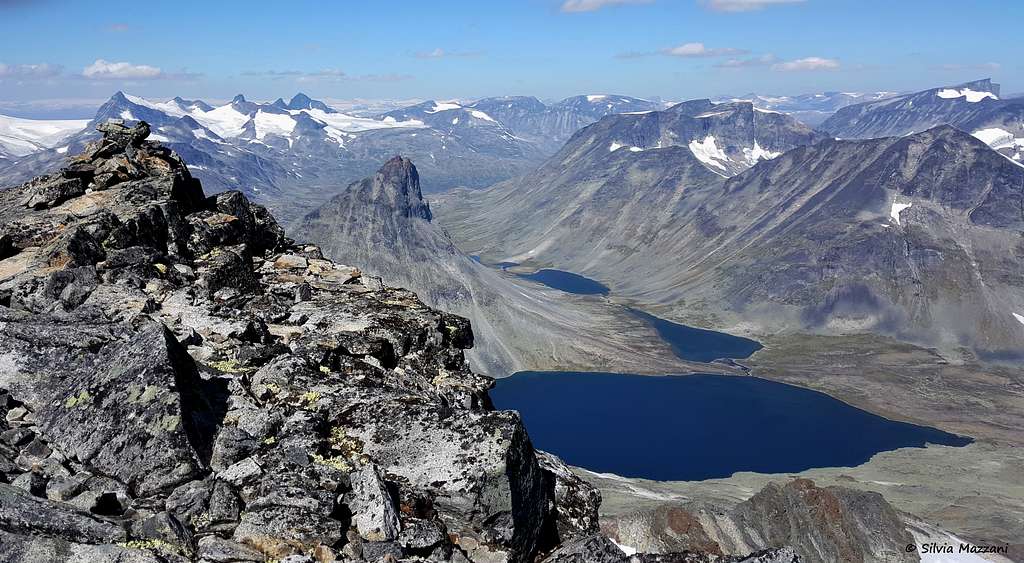
Red Tape
There are no particular restrictions in climbing and hiking. Credit card is needed to pay the toll at the road bar along the private road to Leirvassbu (110 NOK in the summer 2021). Visbretind is lying within the superb Jotunheimen National Park, established in 1980, covering an area of 1140 km² and including the 27 highest peaks in Norway. Jotunheimen is located between Oppland and Sogn og Fjordane counties and it's bordered by the great lake called Vågåvatnet, the valleys of Bøverdalen and Leirdalen and the road No. 55 (the mytical Sognefjellveg) to the N and NW, by the Road 51 to the East, by Bygdin, Tyin and Årdal to the South and by the mountain road between Årdal and Turtagrø to the West.
Nature and climate

Jotunheimen is a wild area of majestic icecapped mountains, glaciers and wonderful lakes. Norway´s highest peak, Galdhøpiggen, lies within the National Park, together with the icecapped Glittertind, only a few metres lower. There are also several large lakes, amongst those the largest one is Gjende. Rapid weather changes can occur, lots of snow in winter due both to the latitude and the high altitude, nice summer with over up to 25 degrees Celsius with sunny weather. Be aware that at higher altitudes deep snow can remain until mid summer. Mountaineering and hiking season varies, but usually they start in late June, being July and August the best months. In this area we can find the highest plants growing in Norway. The beautiful Glacier Crowfoot is the highestgrowing flowering plant, thriving at 2.370 metres on Glittertind, only 100 metres below the summit. Purple Saxifrage and Rose-root or Midsummer men also grow as high as 2.300 metres. Within Jotunheimen National Park we can find a rich variety of lime-loving plants, such as the Mountain Avens and other species, such as Hairy Stonecrop and Red Alpine Catchfly.
Accomodation and Camping
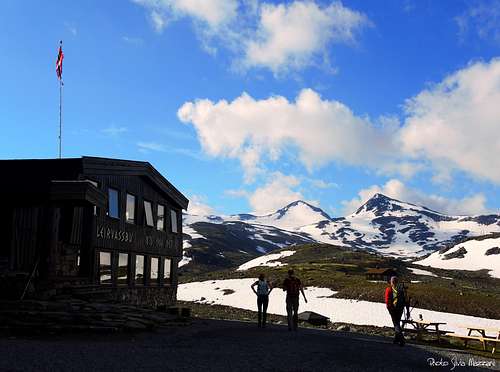
Leirvassbu Mountain Lodge 1400 m
Situation: next to the lake “Leirvatnet”, just below Kyrkja
Open (Winter/Spring): One week before Easter – First weekend in May
Open (Summer): Mid June – End of September mid June/end of September
Guardian: Tove and Ole Jacob Grindvold
Phone: +47 61 21 12 10 Phone 2: +47 61 21 29 21 E-mail: leirvassbu@topofnorway.no
You can pay 50Kr to camp close to either Spiterstulen or Leirvassbu lodges and use the facilities - otherwise both refuges request no camping within about 1km. There are good campsites in upper Visdalen or at Kyrkjaglupen, which are convenient for the North ridge.
When to climb
Summer is the best season
Meteo
Public transport
- Fjord1: operate busses from Otta to Lom and from Lom to Spiterstulen - http://www.fjord1.no/en/default.asp?page=1577
- Nor-Way: Norwegian long distance bus operator (for a bus from Gardemoen to Otta/Lom) - http://www.nor-way.no/?lang=en_GB.
- NSB: Norwegian national rail company (for a train from Gardemoen to Otta) -http://www.nsb.no/?lang=en_US
Guidebooks and maps
Guidebooks
|
Walks and scrambles in Norway
Anthony Dyer - John Baddeley - Ian H. Robertson
Hiking, Scrambling and Mountaineering in Norway, an English guidebook covering Jotuheimen and several other areas in the Scandes
Ripping Yarns 2006
|
|
|
Opptur Jotunheimen
Finn Loftesnes
125 selected itinerary on Jotunheimen
Selja Forlag 2009
|
External Links
- DNT Norwegian Tourism Organisation
- Jotunheimen
- Visitjotunheimen
- Norwegian Mountains




